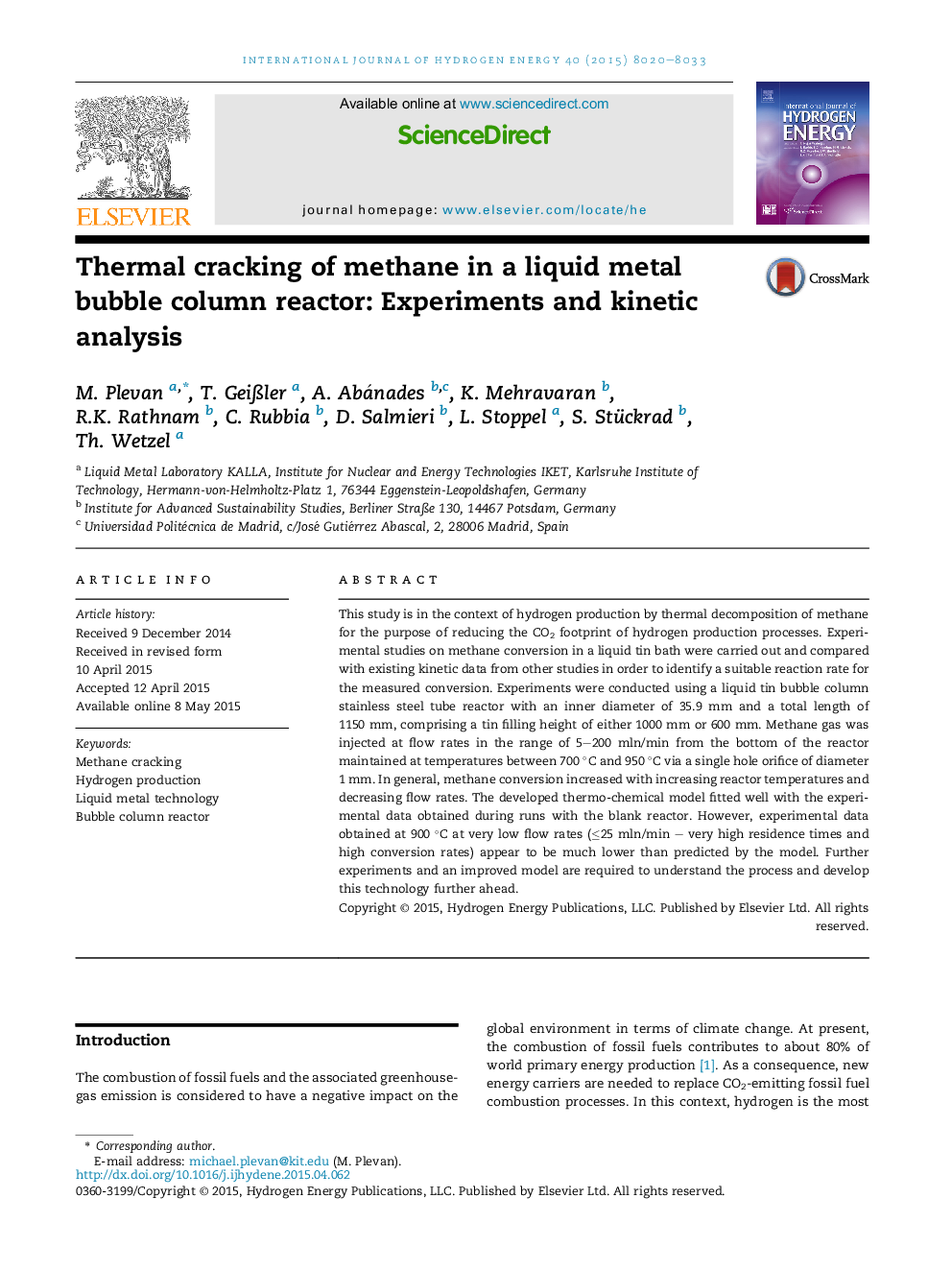| Article ID | Journal | Published Year | Pages | File Type |
|---|---|---|---|---|
| 1270799 | International Journal of Hydrogen Energy | 2015 | 14 Pages |
•We investigated hydrogen production using thermal decomposition of methane.•Methane was injected into a bubble column reactor using tin as liquid media.•Methane decomposition was modeled by one first order reaction kinetic.•Liquid tin did not show a catalytic effect on the overall reaction.•A single first order kinetic is not sufficient for modeling methane decomposition.
This study is in the context of hydrogen production by thermal decomposition of methane for the purpose of reducing the CO2 footprint of hydrogen production processes. Experimental studies on methane conversion in a liquid tin bath were carried out and compared with existing kinetic data from other studies in order to identify a suitable reaction rate for the measured conversion. Experiments were conducted using a liquid tin bubble column stainless steel tube reactor with an inner diameter of 35.9 mm and a total length of 1150 mm, comprising a tin filling height of either 1000 mm or 600 mm. Methane gas was injected at flow rates in the range of 5–200 mln/min from the bottom of the reactor maintained at temperatures between 700 °C and 950 °C via a single hole orifice of diameter 1 mm. In general, methane conversion increased with increasing reactor temperatures and decreasing flow rates. The developed thermo-chemical model fitted well with the experimental data obtained during runs with the blank reactor. However, experimental data obtained at 900 °C at very low flow rates (≤25 mln/min – very high residence times and high conversion rates) appear to be much lower than predicted by the model. Further experiments and an improved model are required to understand the process and develop this technology further ahead.
